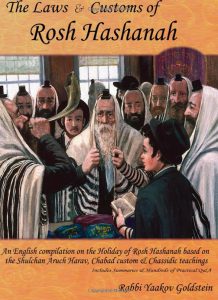
This article is an excerpt from our Sefer
Buy me here or on Amazon.com
4. A Shofar that was heated and shaped: [1]
Turned inside out: A Shofar that was turned inside out[2] is invalid and if one blew with it he has not fulfilled his obligation.[3]
Widened narrow end and narrowed wide end: A Shofar that had its narrow end widened and wide end narrowed through boiling it in water is invalid and if one blew with it he has not fulfilled his obligation. This applies whether one blew from the currently narrow end or from the wide end which was originally narrow.[4]
Q&A
May one heat and change only a single end such as to widen the narrow end or narrow the wide end?
Some Poskim[5] rule that if one changes either end of the Shofar, even if the other end remains intact, the Shofar is invalid.[6] Practically most Poskim[7] are lenient in this matter and so is implied to be the opinion of Admur.[8]
May a Shofar maker widen the narrow end of the Shofar to make the blowing hole bigger?
This follows the same ruling as above, hence practically it is allowed.[9] However some Poskim[10] rule that it is best to avoid doing so in order to suspect for those Poskim[11] that rule the Shofar is invalid. According to Admur one may be lenient.[12] According to all it is forbidden to widen the narrow end and narrow the wide end, as explained above.
May a Shofar maker heat and alter the shape of a curved Shofar?
This follows the same ruling as above, hence from the letter of the law if the Shofar was grown curved it may be heated and molded into a variant curved shape.[13] Nevertheless some Poskim[14] rule it is a Mitzvah Min Hamuvchar to purchase a naturally curved Shofar that has not been changed at all through heat. Practically most Shofros on the market today are heated and formed into nicer curves and only the original Yemenite Shofros retain their natural curved shape.
May a Shofar maker curve a Shofar which has grown straight?
Some Poskim[15] rule that if a Shofar was naturally straight and was then heated and curved, it is invalid. Other Poskim[16] however learn it is valid.
[1] 586/12
[2] Meaning one turned the inner part of the Shofar into the external part and the external part into the inner part as is done when turning a shirt inside out. [ibid]
[3] The reason: This is learned from the verse “Vihavarta Shofar….” Which teaches us that one is to blow the Shofar as it exists in its natural state that it grew on the head of the ram while alive, and comes to exclude if one changed the shape to the opposite form. [ibid]
[4] Admur ibid; M”E 586/20
The reason: This is learned from the verse “Vihavarta Shofar….” Which teaches us that one is to blow the Shofar as it exists in its natural state that it grew on the head of the ram while alive, and comes to exclude if one changed the shape to the opposite form. [ibid]
Other Opinions: According to the M”B 586/60 if one blew from the original narrow end he fulfills his obligation. [Piskeiy Teshuvos 586; Minchas Yitzchak 8/54]
If one did not change the shape but blew from the natural wide end of the Shofar: He does not fulfill his obligation [590/20; see Halacha 12]
[5] Hayom Teruah brought in Peri Megadim M”Z 586/15; Alef Hamagen 586/29; Minchas Yitzchak 8/54 rules to be stringent.
[6] The reason: As since one has altered one of the sides it is no longer considered “Derech Havaraso” the way it was formed.
[7] M”B 586/51 [as is evident that he invalidates only when one blew from the original wide end]; Chayeh Adam 140; Toras Chaim Sofer 586/25 and other Poskim as evident from their omission of this invalidation. [Minchas Yitzchak ibid]
[8] So is implied from Admur 586/12 which writes specifically that only if both the wide and narrow end were changed is the Shofar invalid being that it is the opposite of the way it grew. This implies that if a change is made to the Shofar in a way that is not “the opposite” of the way it grew, then it remains valid. Hence when a change is only made on the narrow side it may be used.
Other opinions in Admur: The Minchas Yitzchak 8/54 learns from Admur which invalidates blowing from either side of a Shofar that has changed on both ends that he holds like the Yom Teruah that it is invalid even if only a single end was changed.
[9] As explained in the lenient Poskim in the previous Q&A!
[10] Minchas Yitzchak 8/54 rules to be stringent.
[11] Hayom Teruah as brought in previous Q&A
[12] As explained in previous footnotes, unlike the ruling of the Minchas Yitzchak
[13] As explained in the lenient Poskim in the previous Q&A!
[14] Minchas Yitzchak ibid; Piskeiy Teshuvos 586/1; Moadim Uzmanim 8/5
[15] See Peri Megadim 586 M”Z 1; Minchas Yitzchak 8/54
[16] Toras Chayim [Sofer] 586/2 as explained in Minchas Yitzchak ibid; See Koveitz Sinai 69



Leave A Comment?
You must be logged in to post a comment.